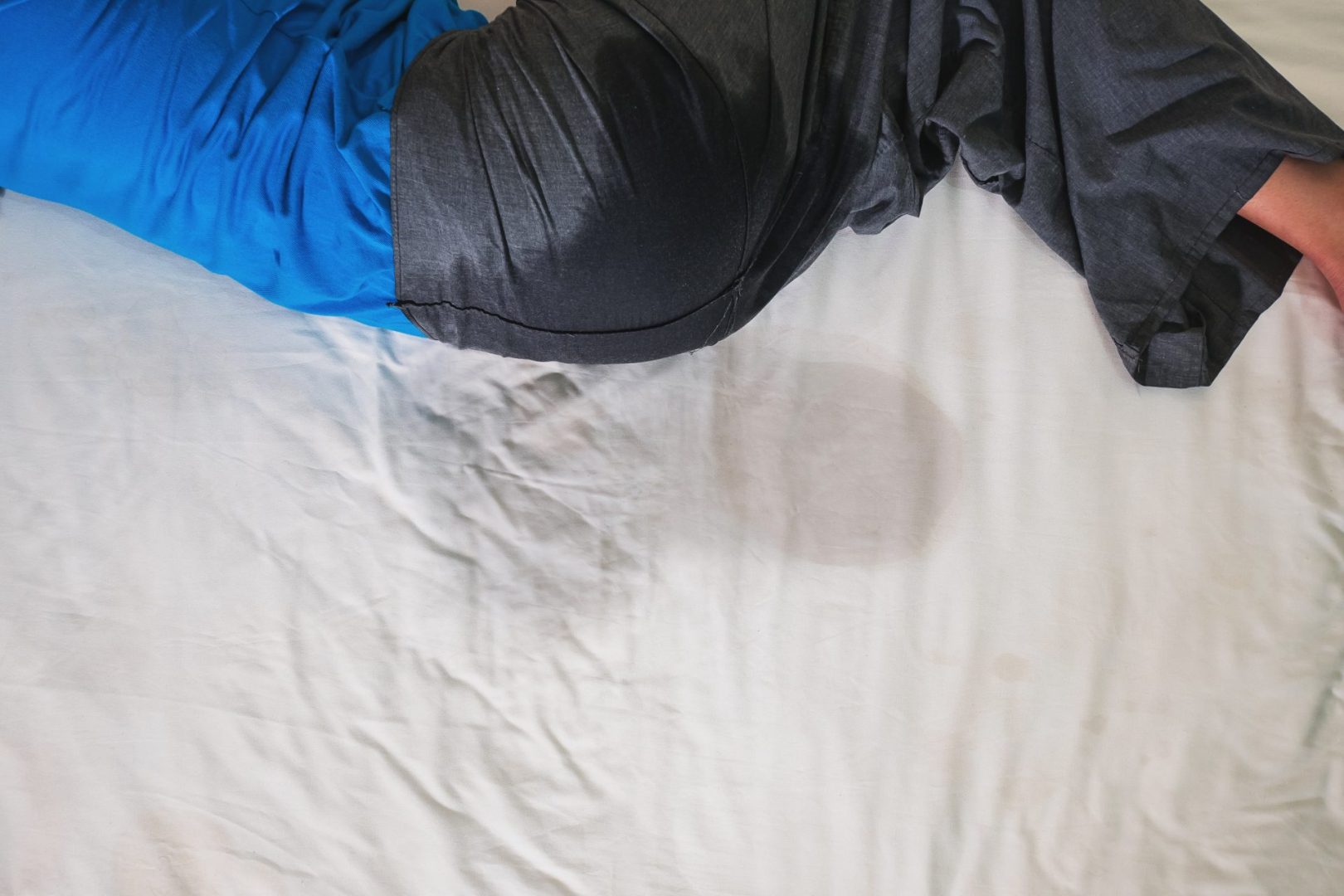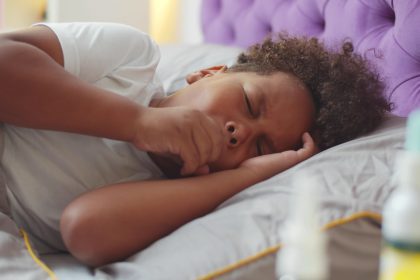The wet sheets, the middle-of-the-night laundry runs, the embarrassed tears – bedwetting can turn peaceful nights into stressful ordeals for entire families. Parents often feel helpless watching their children struggle with something that seems completely beyond anyone’s control. The frustration builds as months pass without improvement, leading to desperate searches for solutions that actually work.
What many families don’t realize is that some of the most effective bedwetting remedies aren’t found in pharmacy aisles or doctor’s offices. Instead, they’re hiding in plain sight within everyday routines and simple household adjustments. These surprisingly powerful fixes have helped countless children achieve dry nights, often within weeks of implementation.
The key lies in understanding that bedwetting rarely has a single cause, which means the most successful approaches address multiple factors simultaneously. Rather than looking for one magic cure, the families who see dramatic improvements combine several strategic changes that work together to support their child’s developing bladder control.
The following five fixes have earned their reputation through consistent results across diverse situations. They don’t require expensive equipment, complicated schedules, or medical interventions. Instead, they rely on practical wisdom about how children’s bodies and minds work together during sleep.
Fix number 1: The strategic bathroom timing revolution
The timing of bathroom visits throughout the day holds far more power than most parents realize. Creating a structured schedule that works with the body’s natural rhythms can dramatically reduce nighttime accidents within just a few weeks.
The secret lies in understanding how the bladder develops strength and capacity. Like any muscle, it needs regular, appropriate exercise to function optimally. Random bathroom breaks throughout the day don’t provide the consistent training that helps children develop reliable bladder control.
The most effective approach involves establishing bathroom visits every two to three hours during waking time, regardless of whether the child feels the urge. This regular schedule helps stretch the bladder gradually while ensuring it never becomes overly full. Over time, this consistent routine teaches the body to hold larger amounts of urine comfortably.
The final bathroom visit of the day requires special attention. Rather than a quick trip right before bed, this should become a deliberate, unhurried process. Children should sit on the toilet for several minutes, even if they don’t initially feel the need to urinate. This extended time allows the bladder to empty completely, reducing the likelihood of overnight accidents.
Timing this final visit correctly makes an enormous difference. The optimal window falls about 30 to 45 minutes before actual bedtime, allowing enough time for any remaining urine to accumulate without making the child feel rushed or pressured. This timing also prevents the common problem of children falling asleep immediately after using the bathroom, which can interfere with the body’s natural nighttime hormone production.
Some families find success with a double-voiding technique during this evening routine. After the child urinates normally, they engage in a quiet activity for five to ten minutes, then return to the bathroom for a second attempt. This process often produces additional urine that would otherwise contribute to nighttime accidents.
Fix number 2: The fluid management game-changer
The relationship between daytime drinking patterns and nighttime dryness is far more nuanced than simply restricting evening fluids. In fact, limiting liquids too severely can actually worsen bedwetting by preventing the bladder from developing proper capacity and by creating overly concentrated urine that irritates the bladder.
The real solution involves strategic timing and smart beverage choices throughout the entire day. Children need adequate hydration to support healthy bladder function, but the distribution of this fluid intake can make the difference between wet and dry nights.
Morning and early afternoon represent the optimal window for consuming the majority of daily fluids. During these hours, children should be encouraged to drink water freely, as this supports proper kidney function and helps establish healthy elimination patterns. The goal is to front-load hydration when the body has plenty of time to process and eliminate excess fluid.
The type of beverages consumed matters significantly. Plain water represents the gold standard for bladder health, while certain drinks can actively contribute to nighttime problems. Caffeinated beverages, including sodas and chocolate milk, act as diuretics and can increase urine production. Acidic drinks like orange juice or lemonade may irritate the bladder, leading to more frequent urination and potential accidents.
Evening fluid management requires a more delicate approach. Rather than imposing strict cutoff times that leave children thirsty, the focus should shift to smaller, strategic sips. If a child needs something to drink with dinner or feels genuinely thirsty later in the evening, small amounts of water are preferable to larger quantities or problematic beverages.
Some families discover that certain foods contribute to nighttime accidents due to their high water content or diuretic properties. Watermelon, grapes, and other juicy fruits consumed late in the day can add significant fluid to the system. Similarly, salty snacks can create increased thirst, leading to higher evening fluid consumption.
Temperature also plays a role in fluid management. Very cold drinks can stimulate the bladder more than room temperature liquids, potentially increasing the urgency and frequency of urination. Serving beverages at moderate temperatures, especially in the hours before bedtime, may help reduce nighttime accidents.
Fix number 3: The bedroom environment transformation
The physical space where a child sleeps can either support or undermine their progress toward dry nights. Simple environmental modifications create conditions that promote deeper sleep, reduce anxiety about accidents, and make nighttime bathroom trips more likely to succeed.
Temperature control represents one of the most overlooked factors in bedwetting prevention. Rooms that are too warm can lead to increased fluid consumption and deeper sleep that makes it harder for children to wake when they feel the urge to urinate. Conversely, rooms that are too cold can cause children to avoid getting up for bathroom trips. The ideal sleeping temperature falls between 65 and 68 degrees Fahrenheit, cool enough to promote restful sleep without creating discomfort that discourages movement.
Lighting modifications can dramatically improve success rates for children who wake during the night but struggle to navigate to the bathroom safely. Installing motion-activated nightlights creates a clear, safe path without the harsh illumination that can fully wake a child and make it difficult to return to sleep. These lights should provide enough visibility for safe navigation while maintaining the dim environment that supports continued sleepiness.
The bed setup itself offers opportunities for significant improvement. Waterproof mattress protectors are essential, but the type and placement matter more than many parents realize. Breathable, quiet protectors prevent the crinkling sounds that can create anxiety and self-consciousness. Layering systems that include waterproof pads between sheets allow for quick changes without completely remaking the bed.
Some families find success with slight bed elevation, raising the head of the mattress by a few inches using pillows or bed risers placed under the head of the bed frame. This gentle incline can reduce the pressure on the bladder during sleep and may make it easier for children to sense when they need to urinate.
The accessibility of appropriate clothing plays a crucial role in nighttime success. Pajamas with complicated buttons, tight elastic, or difficult-to-manage fasteners can prevent children from reaching the bathroom in time even when they wake with adequate warning. Simple, loose-fitting sleepwear that can be quickly removed encourages independence and reduces the time pressure that often leads to accidents.
Creating a calm, stress-free environment around bedtime routines helps children relax and sleep more naturally. This includes avoiding discussions about previous accidents or placing pressure on children to stay dry. The bedroom should feel like a safe space where accidents are manageable inconveniences rather than sources of shame or disappointment.
Fix number 4: The dietary detective approach
The foods children consume throughout the day can significantly impact their nighttime bladder control, yet this connection often goes unrecognized by families struggling with persistent bedwetting. Identifying and modifying dietary triggers can lead to remarkable improvements in just a few weeks.
Certain foods act as natural diuretics, increasing urine production and making nighttime accidents more likely. Chocolate contains caffeine and other compounds that stimulate the kidneys and bladder. Many children consume chocolate in various forms throughout the day without parents connecting this intake to nighttime problems. Reducing chocolate consumption, especially in the afternoon and evening hours, can lead to noticeable improvements.
Spicy foods can irritate the bladder lining, leading to increased urgency and frequency of urination. While most young children don’t consume extremely spicy foods, even mild seasonings and sauces can affect sensitive systems. Parents might experiment with reducing spices in evening meals to see if this impacts nighttime dryness.
Artificial sweeteners present a particularly problematic category for some children. These sugar substitutes can have diuretic effects and may cause digestive upset that indirectly affects bladder control. Common sources include sugar-free gum, diet sodas, and many processed snacks marketed to children. Reading ingredient labels carefully can help identify hidden sources of these potentially problematic additives.
The timing of meals also influences nighttime bladder control. Large dinners consumed close to bedtime can put pressure on the bladder and may stimulate kidney function during sleep hours. Shifting the main meal earlier in the day and keeping evening snacks light and simple can reduce nighttime urine production.
Some children show sensitivity to dairy products, which can cause digestive issues that indirectly affect bladder control. While not every child with bedwetting has dairy sensitivity, families dealing with persistent problems might consider a temporary elimination trial to see if removing milk, cheese, and other dairy products leads to improvement.
Constipation represents one of the most significant dietary factors in bedwetting, as backed-up stool can put pressure on the bladder and interfere with normal emptying. Ensuring adequate fiber intake through fruits, vegetables, and whole grains supports regular bowel movements and may dramatically improve nighttime bladder control. However, high-fiber foods should be introduced gradually to avoid digestive upset.
Hydrating foods consumed late in the day can contribute to nighttime accidents even when liquid intake seems controlled. Soups, smoothies, and fruits with high water content all add to the body’s fluid load. Being mindful of these hidden sources of hydration can help families make more informed choices about evening meals and snacks.
Fix number 5: The stress-busting sleep routine magic
The connection between emotional stress and bedwetting is profound, yet many families focus solely on physical solutions while overlooking the psychological factors that can trigger or worsen nighttime accidents. Creating a calming bedtime routine that addresses anxiety and promotes deep, restful sleep often produces dramatic improvements in bladder control.
Stress hormones can interfere with the body’s natural nighttime processes, including the production of antidiuretic hormone that normally reduces urine production during sleep. Children dealing with school pressure, family changes, social difficulties, or other stressors may experience increased bedwetting even if they previously had good control.
The key lies in creating a buffer zone between the day’s activities and sleep time. This transition period should gradually shift the child’s nervous system from an active, alert state to a calm, relaxed condition that supports deep sleep and natural bladder control.
Physical relaxation techniques adapted for children can be remarkably effective. Simple progressive muscle relaxation, where children tense and release different muscle groups, helps release physical tension that may interfere with sleep quality. Starting with the toes and working up through the body, children can learn to identify and release areas of tightness they may not have noticed.
Breathing exercises provide another powerful tool for promoting relaxation and better sleep. Teaching children to breathe slowly and deeply, perhaps imagining their breath as ocean waves or gentle breezes, helps activate the body’s natural relaxation response. These techniques become more effective with practice and can be used whenever the child feels anxious or stressed.
Creating predictable, soothing bedtime rituals helps signal to the body that it’s time to wind down. This might include warm baths, gentle massage, quiet reading, or listening to calming music. The specific activities matter less than their consistency and calming effect. Children thrive on routine, and knowing what to expect can reduce anxiety around bedtime.
The emotional atmosphere during bedtime routines significantly impacts their effectiveness. Parents who feel stressed or frustrated about bedwetting may inadvertently communicate this tension to their children, creating a cycle where anxiety about accidents makes accidents more likely. Approaching bedtime with patience, positivity, and confidence in eventual success helps children relax and feel secure.
Some families find that addressing daytime stressors directly leads to improvements in nighttime bladder control. This might involve problem-solving around school difficulties, improving social situations, or simply providing more emotional support during challenging periods. When children feel more secure and less stressed overall, their bodies can focus energy on developing better bladder control.
Sleep quality itself affects hormone production and bladder function. Children who experience restless, interrupted sleep may not produce adequate amounts of the hormones that normally concentrate urine during nighttime hours. Creating conditions that promote deep, restorative sleep supports the body’s natural mechanisms for staying dry through the night.
The power of positive visualization shouldn’t be underestimated. Some children benefit from imagining themselves waking up dry, feeling proud and confident. This mental rehearsal can help program the subconscious mind to support the desired outcome and may improve the child’s motivation to follow through with other helpful strategies.
Putting the pieces together for lasting success
The most successful families don’t rely on any single fix but instead combine multiple approaches to create a comprehensive support system for their child’s developing bladder control. This might mean implementing strategic bathroom timing while also adjusting the bedroom environment and addressing dietary triggers.
Progress often comes in waves rather than straight lines. Children may have several dry nights followed by an accident, or they may show improvement for weeks before experiencing a temporary setback. Understanding that this pattern is normal helps families maintain consistency with their chosen strategies rather than abandoning approaches that are actually working.
The timeline for seeing results varies significantly between children, but most families notice some improvement within two to four weeks of implementing these fixes consistently. Full resolution may take several months, particularly for children who have been dealing with bedwetting for extended periods.
Patience and persistence represent the most crucial elements in any bedwetting solution. Children can sense their parents’ frustration and anxiety, which can actually worsen the problem by creating additional stress. Maintaining a positive, supportive attitude while consistently applying these practical fixes creates the best environment for natural improvement.
The journey from wet nights to dry ones doesn’t have to involve expensive treatments, complicated medical interventions, or months of continued frustration. These five fixes address the most common underlying factors that contribute to bedwetting, offering families practical, accessible solutions that work with the body’s natural development rather than against it.
Success often comes not from finding the one perfect solution but from creating conditions that support the child’s natural progression toward bladder control. By addressing timing, environment, diet, and stress simultaneously, families can accelerate this natural process and help their children achieve the dry nights that seemed impossible just weeks before.

















